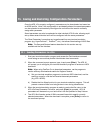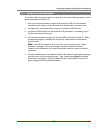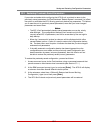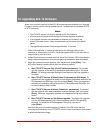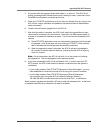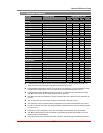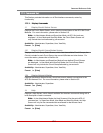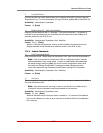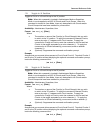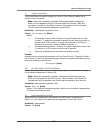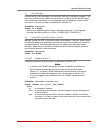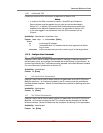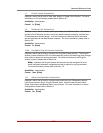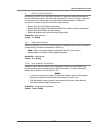
17-4
Command Reference Guide
/L Log Functions
Provides access to a menu which allows you to display the Audit Log, Alarm Log and
Temperature Log. For more information on Log Functions, please refer to Section 5.3.4.
Availability: Administrator, SuperUser
Format: /L [Enter]
/J Display Site ID / Unit Information
Displays the user-defined Site I.D. message. If the optional asterisk (*) argument is
included in the command line, the command will also show the model number and
software version for the AFS-16 unit.
Availability: Administrator, SuperUser, User, ViewOnly
Format: /J [*] [Enter]
Where * is an optional argument, which can be included in the command line to
display the exact model number and software version of the AFS-16 unit.
17.3.2. Control Commands
/X Exit Command Mode
Exits command mode. When issued at the Network Port, also ends the Telnet session.
Note:Ifthe/Xcommandisinvokedfromwithinaconfigurationmenu,recently
definedparametersmaynotbesaved.Inordertomakecertainthatparameters
aresaved,alwayspressthe[Esc]keytoexitfromallconfigurationmenusand
thenwaituntil"SavingConfiguration"messagehasbeendisplayedandthe
cursorhasreturnedtothecommandpromptbeforeissuingthe/Xcommand.
Availability: Administrator, SuperUser, User, ViewOnly
Format: /X [Enter]
/C Connect
This command can be used to establish a bidirectional connection between the Serial
Port and the Network Port.
Note:UserlevelaccountscanonlyconnecttotheSerialPortorNetworkport
ifaccesstotheporthasbeenspecificallyenabledfortheaccount.
Availability: Administrator, SuperUser, User
Format: /C <x> [Enter]
Where x indicates the port that you wish to connect to. To connect to the Network
Port from the Serial port, enter an N; to connect to the Serial Port from the Network
Port, enter a 1.



